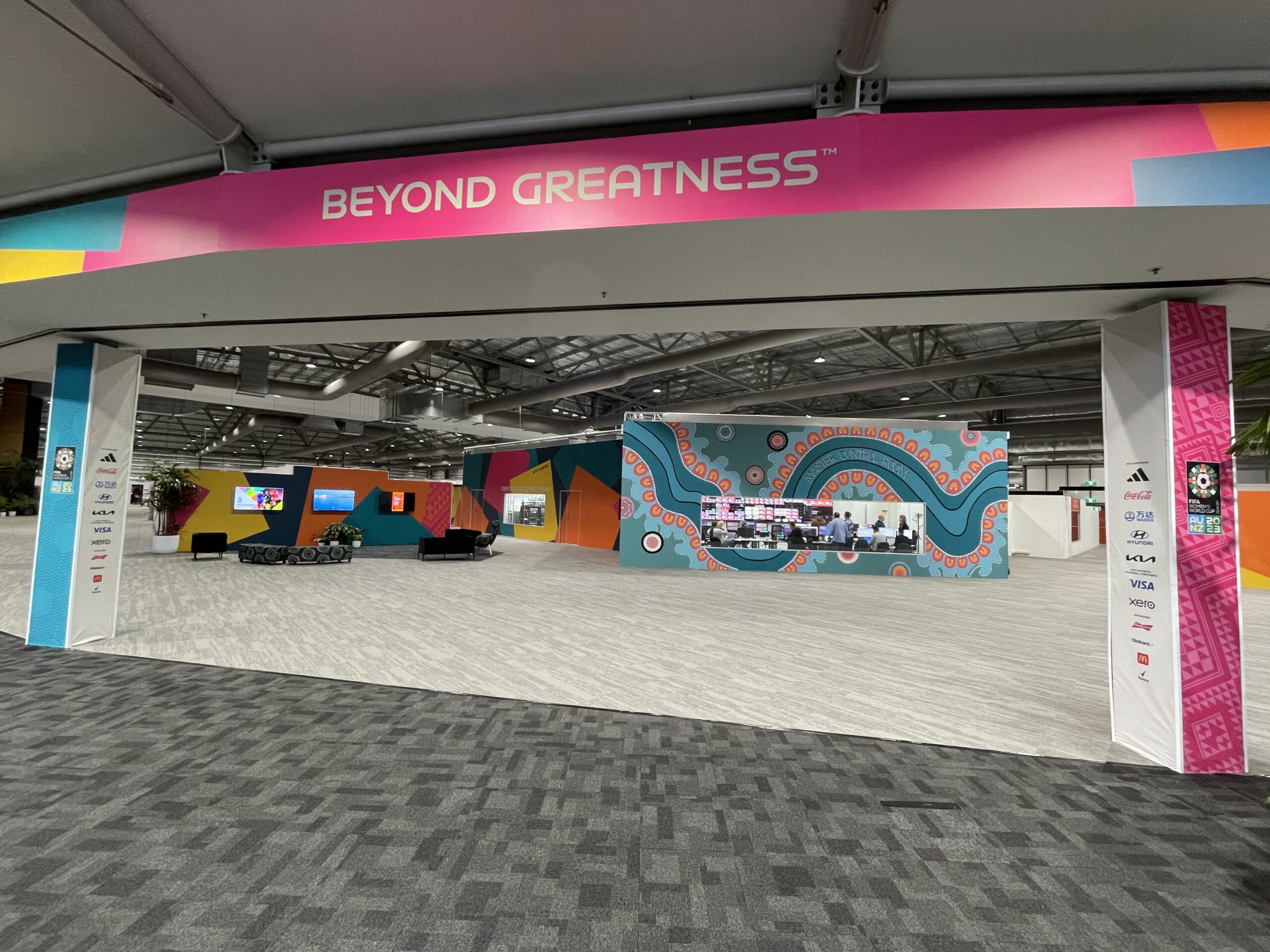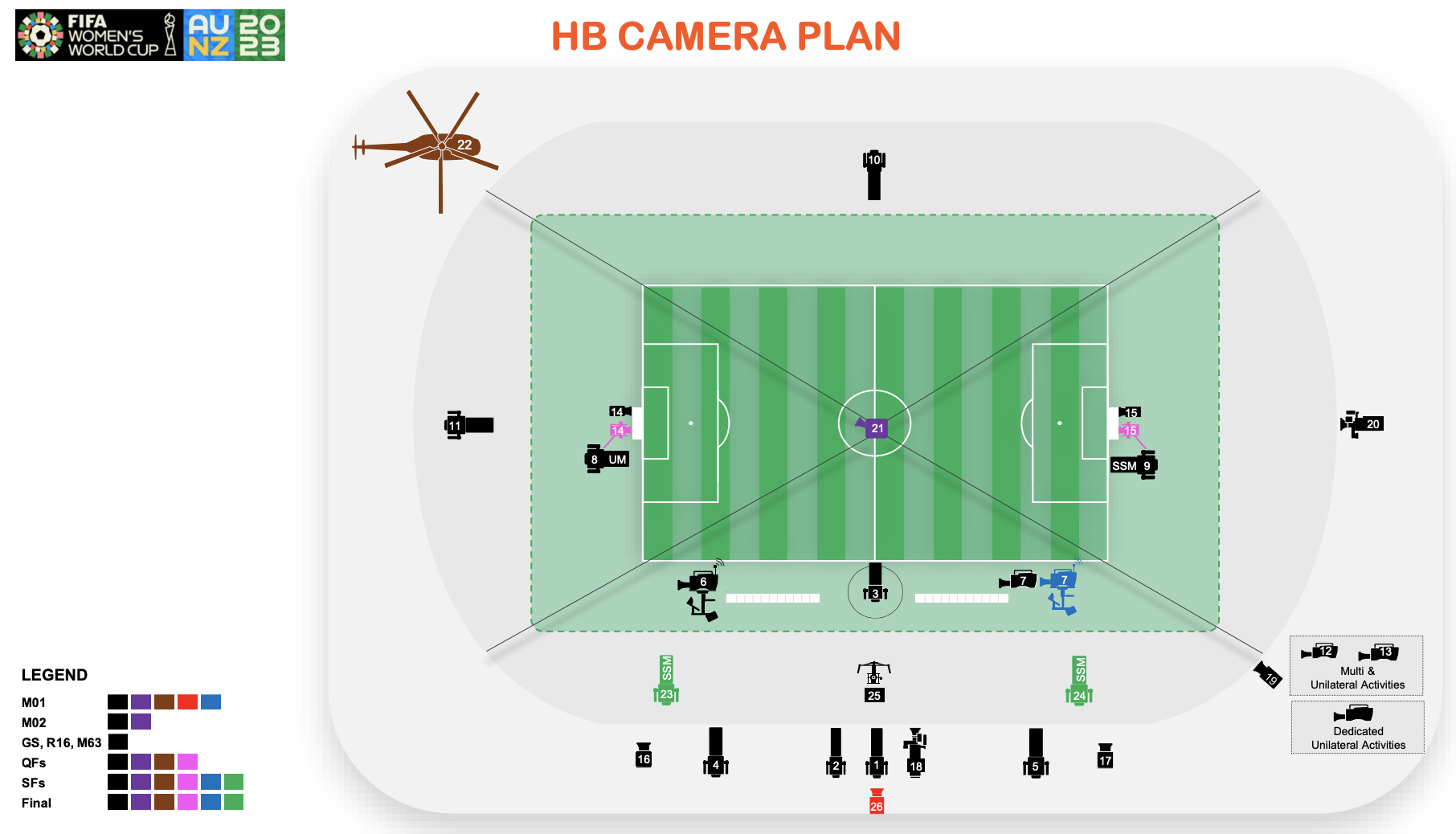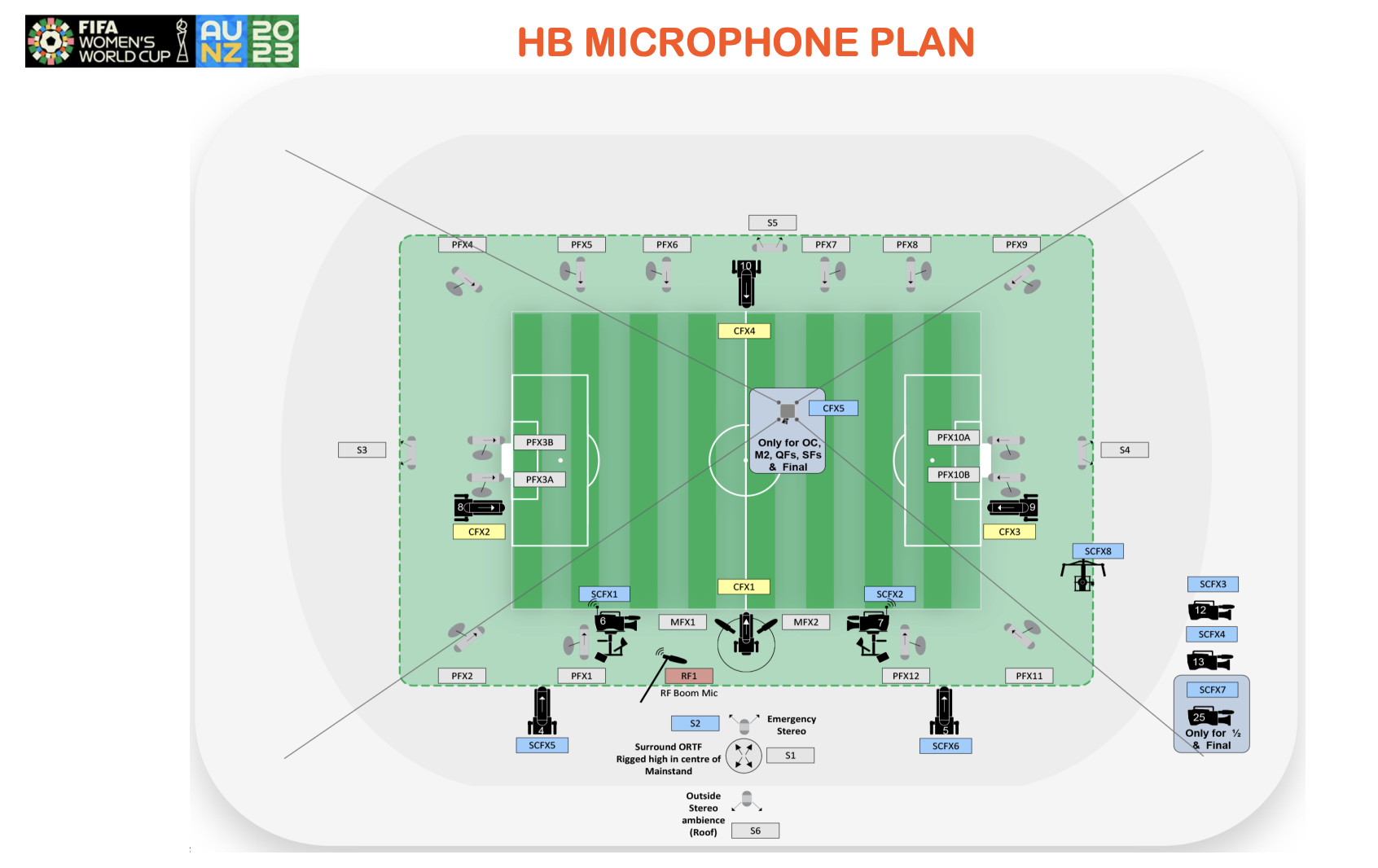2023 FIFA Women’s World Cup: Production Teams To Work From Sydney Hub; Social-Media Plans Expand
FIFA and HBS will create more than 3,000 hours of content to meet rightsholders’ demands
Story Highlights
The 2023 FIFA Women’s World Cup begins in earnest on Thursday, July 20 when New Zealand kicks things off against Norway, With it begins a new era in World Cup production: HBS, host broadcaster for FIFA, will deploy five production teams, including directors and producers, to handle all matches remotely out of a production hub in Sydney.
With matches played in 10 stadiums (six in Australia, four in New Zealand), the advantages of keeping the production teams in one location are numerous. Topping the list: teams won’t have to crisscross the continent, saving costs, time, and energy (both the human kind and the fossil kind).
The Sydney production hub will be connected to IP trucks in Melbourne Rectangular Stadium and Stadium Sydney Australia; the other eight stadiums hosting matches will have IP flypacks. There will be nine stadium-based production teams, comprising camera operators and floor manager, at the venues (one team will handle the two stadiums in Sydney).
The host-broadcast production format is HD 1080p/50 HDR with 21-25 cameras in use for each match, depending on the phase of the tournament. Specialty cameras will include ultra-motions, super-slow-motions, cable cams, pole cams, and heli cams. In addition, following successful deployment for FIFA World Cup Qatar 2022, cine-style cameras will be in operation at every match.
As usual, a stellar lineup of directors has been assembled: Jamie Oakford and Gemma Knight from the UK, Angus Millar from Australia, Danny Melger from Netherlands, and Sebastian Von Freyberg from Germany.
The remote-production model relies on a dedicated fiber Broadcast Contribution Network (BCN), which connects each stadium to the central hub in Sydney over 40G redundant links. The hub is connected to the IBC, located at Sydney Olympic Park, over 400G redundant links. The IBC itself will be home for five rightsholders: Fox Sports U.S., Telemundo, Channel Seven Australia, Australia’s Optus Sports digital service, and TSN Canada. Those rightsholders (and all others) will have access to feeds in the following formats: HD 1080p/50 HDR, HD 1080p/50 SDR format (Rec. 709), HD 1080i/50 with embedded audio.
Also at the hub, four teams dedicated to additional content and four slo-mo teams will produce four match feeds: the basic international feed (BIF), a clean international feed (CIF), the world feed (WF), and an additional content channel (ACC). A fifth feed, Matchday-1 press conferences, will also be live and offered as a separate isolated feed.
Over the years, the content provided by FIFA and HBS for rightsholders has ballooned significantly. As digital delivery has expanded, so has rightsholders’ desire for content that goes well beyond the action on the pitch. They seek more scenic shots, more features that bring viewers closer to the host country and host cities, reports from practices and press conferences, and much more. To meet the demands, FIFA and HBS will create more than 3,000 hours of content designed to bring fans closer to what is happening in Australia and New Zealand (more on that later). Most postproduction operations (short-form match highlights and 24-minute daily highlights programs, amongst others) will be housed at a non-live hub in Greater London, UK.
Next-Gen Graphics
Following the successful introduction of enhanced graphics at the FIFA World Cup 2022, the increase in the number of data points available from each match naturally lends itself to increased opportunities to pass the most relevant information to the viewer. The goal is to offer viewers data that is understandable, editorially interesting, and supportive of the story of the match.
The data, provided centrally by the FIFA High Performance Programme Department, is picked up by the graphics teams, which for each match consists of a coordinating producer, graphics producer, and graphics operator. The teams will follow the story of the match and provide graphics that support the narrative to the events unfolding on the pitch.
In-match enhanced graphics are usually lower-thirds or found in the corner of the screen to ensure that the information does not detract from the match itself. Full-frame graphics are used at halftime and full time; these graphics are often on screen for longer as there is time to get into more detail about how a specific piece of data analysis is impacting the match. The graphics shown at halftime and full time are also useful for broadcasters, who look to use them either as in-studio analysis or as digital assets on their social-media platforms.
VAR Coverage
VAR (Video Assistant Referee) graphics were a big hit in Qatar last year, and a series of informative graphics will provide viewers this year with a clear and transparent overview of the VAR process. A specifically developed animation will clarify the offside situations.
On-field reviews are covered in a picture-in-picture (PIP) format, with the main window replicating the images that the referee is offered for review by the VAR. In addition, the FIFA Women’s World Cup 2023 will continue FIFA’s trial with broadcasting VAR review decisions in-stadium and live to the television audience.
Non-Live Production
The FIFA TV Team Crew (FTTC) project will be in operation for the FIFA Women’s World Cup, providing Media Rights Licensees (MRLs) with additional content to support their event programming, mainly away from the live match coverage.
A total of 32 FTTC producers, who are native speakers of the respective participating team, will be embedded with that team and follow it throughout the tournament and will be responsible for centralized production of any content coming from the teams.
The producers will be paired with a local camera operator to produce the content, including exclusive interviews with the players, the head coach, and backroom staff in the build-up to each match. The content also includes behind-the-scenes filming and footage from extracurricular events that the teams undertake, as well as training sessions and press conferences. On match days, each crew will be in the stadium to support the HB coverage by providing further content, such as pre-/post-match interviews, fan color, match ISO, and post-match dressing-room coverage.
All content shot by the FTTCs will be made available to broadcasters as raw source material via the FIFA MAX server. This gives broadcasters the flexibility to create their own bespoke content pieces that best fit their programming and social-media needs. The project, providing footage from all 32 team camps, can also take the pressure off broadcasters in terms of the number of TV crews they have to provide to cover the event.
Going Deeper With Features
FIFA TV will create fully produced content pieces made available to the broadcasters, again via the FIFA MAX. The features help tell the story of the tournament away from the live action. They bring to life the star players, the ones-to-watch, and those who suddenly make their name at the tournament, helping the viewer to get to know the competitors better. The features introduce the world to the head coaches and the backroom staff and offer insight into life behind the scenes at the FIFA Women’s World Cup.
The features are produced at the IBC in Sydney by a dedicated team of producers, video editors, and craft graphics operators. Highlight production also is key to an event of this magnitude, at which coverage is global and around-the-clock. FIFA TV will produce a short, approximately two-minute highlights package for broadcasters so that they can have a package turned around quickly for use in programming or on social-media channels. It will also produce a 24-minute highlights program every match day, offering a comprehensive round-up of the day’s action and giving broadcasters a ready-to-use program for their respective channels. Both offerings will be produced at FIFA TV’s remote-production hub at Stockley Park in London.
Serving Social, Digital Content
Social-media production will serve MRLs’ and FIFA’s own social channels. Daily illustrations, enhanced videos, vertical video, and Digital First content, which was popular at the FIFA World Cup Qatar 2022, will be shared with MRLs in an easy-to integrate and platform-agnostic fashion.
Content destined for FIFA-approved platforms is produced with 1:1, 4:5, 9:16, and 16:9 aspect ratios, and publication to MRLs will occur via the Social Media Interface (SMI), a web-based platform for social-media managers.
Content creators at every host city in Australia and New Zealand will leverage exclusive venue and behind-the-scenes access to provide vertical clips captured by mobile phone: arrivals, players on the pitch, goals, post-match moments, players with family. Near-live clips will be provided within minutes (stadium sound, no editing), along with edited clips, such as “Digital First Highlights.”
The operation will be crewed by 18 Digital First content creators (two in each host city covering match-day and other team activities), as well a senior producer and two video editors.
Also, for the first time, FIFA will offer a digital production dedicated to its partnership with TikTok and containing live streaming, clips, daily shows, and content from selected influencers.
With the aim of offering innovative services and considering new trends in the market, FIFA has developed a new streaming concept: by using volumetric cameras, data will be collected from the players and inserted into the feed in the form of augmented graphics.
Captures of all elements — player tracking, data (speed, distance, ball speed) — will be translated into live-data visualization on dedicated match feeds, allowing fans to follow the action through heat maps, passing-accuracy stats, head-to-head/ball-possession comparisons, and general player/team performance.
This concept will be deployed for streams from several FIFA Women’s World Cup Australia & New Zealand 2023 matches: USA v. Vietnam, USA v. Netherlands, Portugal v. USA, and all matches from the quarterfinals on.



